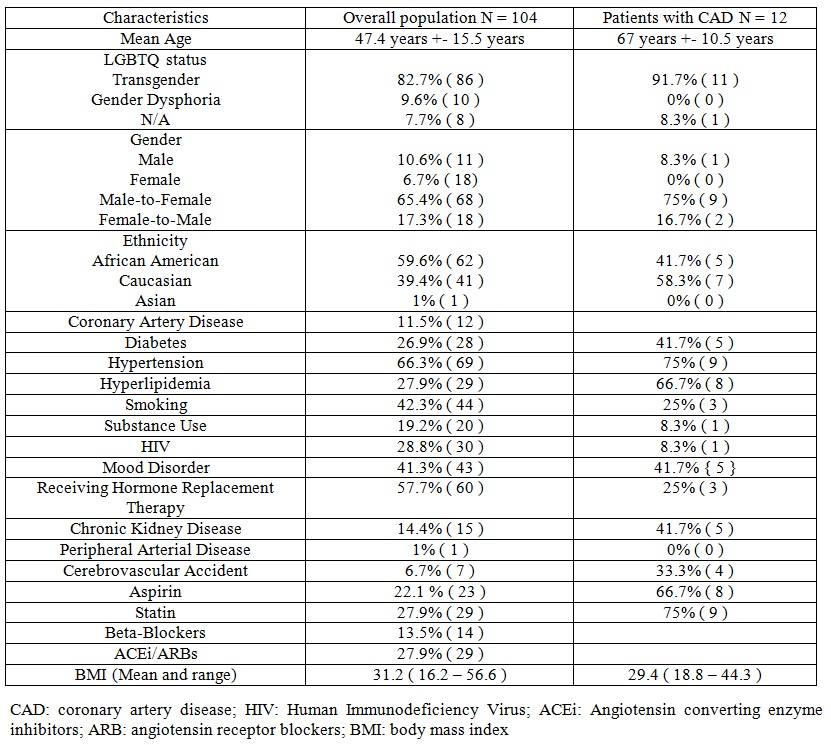Background: The lesbian, gay, bisexual, transgender and queer or questioning (LGBTQ) population has been steadily growing in the United States over the past decade. Several reports suggested higher prevalence of cardiovascular risk factors in the transgender population, including higher rates of human immunodeficiency virus infection, obesity, sedentary lifestyle, alcohol abuse, smoking and mood disorders. Our report aims to analyze the cardiovascular profile of individuals with a diagnosis of coronary artery disease (CAD), and investigate appropriateness of medical management, within the LGBTQ community in the MedStar health network.
Methods: A multicenter retrospective analysis of LGBTQ individuals with history of CAD or risk factors for CAD within the MedStar health network from 2000 to 2017 was performed. Natural language processing with strings was utilized to retrieve patients’ charts with International Classification of Diseases‐ninth and tenth Revision (ICD-9 and ICD-10) codes for LGBTQ status, cardiovascular risk factors and CAD. Our search identified 104 patients. Chart review was used to abstract patients’ demographics, risk factors and medications.
Results: Our analysis showed LGBTQ status was most commonly transgender in our population (82.7%). African Americans accounted for 62% of population size, while Caucasians accounted for 41%. Mean age was 47.7 years (+- 15.5 years). Prevalence of CAD was 11.5% with a mean age of 67+- 10.5 years. Regarding gender, 75% were male-to-female transgenders. In terms of ethnicity, 41.7% of CAD patients were African Americans, while 58.3% were Caucasians. Hypertension was the most common risk factor (75%), followed by hyperlipidemia (66.7%). Only two thirds of the patients with CAD were receiving aspirin therapy, while only 75% of them were receiving statin therapy.
Conclusions: Our analysis identified that the most common risk factors for CAD in LGTBQ individuals are hypertension and hyperlipidemia. Most CAD patients within our sample population were Caucasian male to female transgenders. More prospective cohort studies are needed to investigate medication adherence and clinical outcomes in this population.

